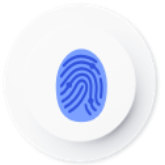Qualcomm presents the 3D Sonic Sensor Gen 2. The new ultrasonic fingerprint reader is bigger and faster
Source: Pure PC added 12th Jan 2021During the CES 2021 technology fair in Las Vegas, Qualcomm announced a new generation of ultrasonic fingerprint reader, which will be used in smartphones. More precisely – under displays mounted in mobile devices. 3D Sonic Sensor Gen 2 is thinner than its predecessor, but boasts a larger scanning surface. The module can collect more biometric data, making it much faster than the previous generation variant. The manufacturer announced that the title component can be used in smartphones that will debut at the beginning of this year. Devices with folding screens may be involved.
Qualcomm 3D Sonic Sensor Gen 2 is the next generation of ultrasonic biometric sensor. The new fingerprint scanner can be used in folded smartphones, although it will work well in classic ones.
MediaTek has beaten Qualcomm, Apple and Samsung – we have the new king of mobile chips for smartphones in Q3 2020 of the year
The first generation of the 3D Sonic Sensor made its debut in 2018 and although the solution brought a breath of fresh air to the smartphone segment, its operation left a lot to be desired. The manufacturer, however, did not give up and created a successor that can boast a higher efficiency. Thanks to 77% more scanning space, the sensor is able to collect 1.7 times more data. This also translates to 50% faster performance. To sum up – it will be faster and more accurate, and it was the above-mentioned issues that were limping in the case of the predecessor.
MediaTek beats Qualcomm, Apple and Samsung – we have the new king of mobile chips for smartphones in Q3 2020 of the year
I am looking forward to trying out a new solution and comparing its possibilities with those of its predecessor. The manufacturer’s assurances are one thing, but only actual use can show the real usefulness of Qualcomm 3D Sonic Sensor Gen 2. Nevertheless, I am afraid that the title sensor will not be able to compete with classic solutions mounted on smartphone housings. Perhaps the next iteration of the tool will surpass “traditional” biometric readers.
Source: Qualcomm
